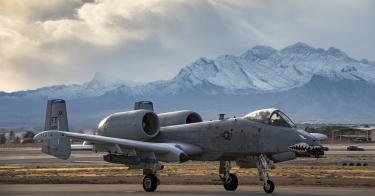President Trump has pledged to expand the size of the U.S. military by as much as one third in some areas. The U.S. already spends more than $600 billion a year on defense, and some estimate the expansion could tack on an extra $100 million annually.
That’s an eye-watering amount, albeit well within historical averages for the U.S. The real question is, “Does the country really need a military that big and that costly?”
Throughout the Cold War, the answer was indisputably, “Yes.” The U.S. needed a military capable of both deterring Soviet aggression in all potential theaters and protecting other U.S. interests too. The U.S. consistently spent the equivalent of $1 trillion annually on defense until the USSR collapsed in late 1991. That led to dramatic reductions in the size — and funding — of the military.
The 9/11 terror attacks thrust the U.S. back into large-scale military operations in distant theaters. Conflicts that started in Afghanistan and Iraq have evolved in many ways and roiled over into Syria, North Africa and beyond.
Fifteen years of conflict have outlasted the planned service life of equipment — hours on planes, miles on tanks and trucks, etc. As equipment wears, it must be repaired or replaced just to sustain operations. And as the years tick by, what was useful in combat becomes obsolete, forcing the military to develop new capabilities to keep pace with our foes.
Our warriors get worn out too, by frequent and lengthy deployments.
With adequate funding, the military could keep pace. But the 2011 Budget Control Act slashed planned defense spending by $1 trillion over the next decade. That forced the military into a dangerous juggling act, trying to balance troop training needs with equipment repair and replacement demands, as well as preparing for future challenges.
Inevitably, all three areas have suffered. Shrinking the force has reduced personnel expenses — but at a cost. Now fewer people must bear what is an increasing operational burden.
So, how large a military does the U.S. need? The U.S. still has global interests, and though the Soviet Union is gone, it has been replaced by an array of challengers who, in aggregate, present an even larger, more complex challenge.
The relatively benign Russia of the 1990s is now actively destabilizing Eastern Europe, rapidly modernizing its military and serving as the lead power broker in the Middle East. A newly expansionist China has made extravagant territorial claims, is intimidating its neighbors and improving its ability to project military power. North Korea is expanding its nuclear arsenal and improving its ballistic missiles. Iran, while retaining its capacity to pursue nuclear weapons, is exploiting the mayhem in the Middle East to press its hegemonic ambitions throughout the region. And terror groups of various stripes, affiliated with or inspired by al Qaeda and ISIS, have cut a swath of destruction from northern Africa through the Middle East and across Europe.
Since World War II, the U.S. has found itself involved in a major “hot” war every 15 to 20 years, while simultaneously maintaining substantial combat forces in Europe and several other regions. Some argue that the world has so changed that the U.S. need not keep large forces “at the ready” — that diplomacy and economic interdependencies have negated the need for “hard power.” But countries like Russia and terror groups like ISIS appear not to have embraced that belief. The U.S. really has no choice but to take the world for what it is, while working to make it something different, something better.
In February 2011, then-Secretary of Defense Robert Gates observed that “when it comes to predicting the nature and location of our next military engagements, since Vietnam, our record has been perfect. We have never once gotten it right we had no idea a year before any of [a series of conflicts] that we would be so engaged.”
Having the ability to fight one major conflict enables the U.S. to protect a core interest against a major competitor, but only one. With major competitors simultaneously challenging U.S. vital interests in several areas around the world, America continues to need a global force big enough, modern enough and ready enough to protect its interests.
For the last several years, U.S. senior military officials have consistently warned of the deteriorating state of America’s military: its decreasing size, degraded readiness and delayed modernization. President Trump is correct to acknowledge this dangerous state of affairs.
For the federal government, Job One is to “provide for the common defense.” The United States needs a military large enough to protect its interests globally — and should budget accordingly.


